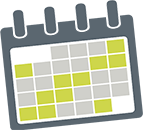Sign up for bi-weekly tips, tricks, and wellness news!
Error: Contact form not found.
Sign up for bi-weekly tips, tricks, and wellness news!
Error: Contact form not found.
This six-day challenge will help you get the most from your exercise routine
You just finished your workout and feel great—as you should! But hold off on patting yourself on the back. “The secret to getting results from exercise isn’t just the workout itself but what happens during the recovery period after a workout,” says certified personal trainer Pete McCall, MS, a spokesperson for the American Council on Exercise. Not sure how to make recovery a part of your routine? We’ve got you covered with this easy goal-based plan that incorporates all the essential elements you need to start your recovery on the right foot.
Exercise is awesome for your health, but it puts stress on the body. The rest and recovery period after you break a sweat is when your body adapts to those stresses and you make fitness gains. Here’s why a postworkout cooldown matters:

It brings down your
heart rate gradually
During an intense
workout your heart
rate can increase
dramatically. Stop
abruptly and you’ll
jolt your blood
circulation and may
feel lightheaded.

It recharges
your muscles
A simple cooldown
routine can ward off
soreness by delivering
oxygen and nutrients
so your muscles can
recover faster.

It helps prevent injury
Ending a workout
with a few gentle
stretches increases
the range of motion
in your joints, relaxes
the muscles, and brings
your body
back to full and
normal function.
Ignore your body’s need to rest and recover long enough and you might
find that exercising’s many benefits get turned upside down: Your body
gets the wrong cues and begins to pump out excess stress hormones,
kick-starting the classic flight-or-fight response. That can lead to everything
from unwanted weight gain to a weakened immune system.

You’re exhausted,
not energized

Your muscles feel
sore* for days

Your strength and endurance is going down, not up

You have trouble
sleeping

You’re getting
more colds
*Minor aches are normal when you start a new workout, or when you kick it up a notch.
Along with slowing your pace for three to 10 minutes before completing
your workout, you’ll want to end your session with a few key stretches
that target all of your major muscle groups. Get started with these
beginner-friendly moves; hold each for 30 to 60 seconds per side.
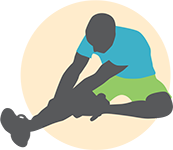
Hamstring stretch
Sit on the ground with one leg out in front of you and the other folded with the sole of your opposite foot on your inner thigh. Lean forward, reaching for your toes (or shin) on your outstretched leg.
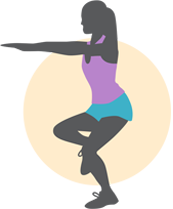
Glutes & hip stretch
Hold onto the back of a chair for balance, cross one ankle over the opposite thigh and sink your hips down like sitting in a chair, until you feel a gentle stretch in the side of your butt.
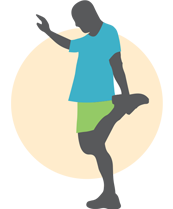
Quadricep stretch
Holding onto the back of a chair (or tree) for balance, lift one leg behind you, grab your foot and gently pull it toward your butt.
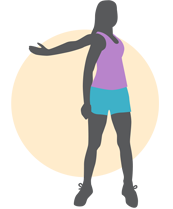
Shoulder & chest stretch
Stand with your back facing a wall, about a foot away from it. Reach one arm back and place your palm and forearm on the wall (your thumb should be up). Gently twist your torso away from the wall until you feel a stretch in your chest and shoulder.
The foods you eat and the fluids you drink can greatly influence
how quickly you recover from a workout. To replenish your energy, have
a snack or meal that meets these three R’s of recovery nutrition:
 REFUEL with carbohydrates Carbs provide your body and brain with the fuel needed to recover and adapt to your training sessions.
REFUEL with carbohydrates Carbs provide your body and brain with the fuel needed to recover and adapt to your training sessions. REBUILD with protein Protein and amino acids help maximize muscle repair.
REBUILD with protein Protein and amino acids help maximize muscle repair. REHYDRATE Fluids can minimize cramping and muscle fatigue. Opt for plain water or a sports drink for a hit of electrolytes.
REHYDRATE Fluids can minimize cramping and muscle fatigue. Opt for plain water or a sports drink for a hit of electrolytes.Try these foods to get a hit of both carbs and protein to speed your recovery. Aim for three or four grams of carbs for every one gram of protein.
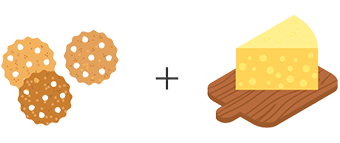
Whole-grain crackers
cheese

Greek yogurt
fresh fruit

Whole-grain pita wedges,
veggies, hummus dip
Sleep is one of the most important parts of an effective recovery program:
It’s when the body produces the hormones responsible for stimulating
muscle protein synthesis, which is critical for repairing muscle tissue. If you
don’t get enough shut-eye, your body never has a chance to fully recover.
People who get less than eight hours of sleep per night
are nearly twice as likely to suffer a sports injury than people
who sleep eight or more hours a night.
Go to bed 15 minutes earlier than your usual time.
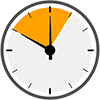
Stick with this new bedtime for a week,
then add more sleep by turning in
15 minutes earlier the following week.

Continue increasing your sleep each
week until you’re getting seven to eight
hours a night.
While it’s important to get in some kind of physical activity every day,
every workout should not be a high-intensity one. A good rule
of thumb is to allow two days between high-intensity workouts, mixing
in medium- and low-intensity days to let your body recover.
Any of these low-key activities are ideal for your rest day.
